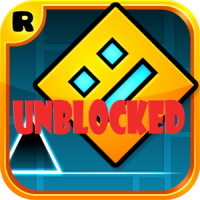Geometry Dash is an electrifying rhythm-based platform game that not only provides players with thrilling gameplay but also offers a remarkable opportunity to enhance their spatial awareness skills. This engaging game can be considered as a hidden gem in the educational world of geometry and rhythmic coordination. In this article, we will explore the intricacies of Geometry Dash and delve into how it can be used as an educational tool to improve students’ mathematical and spatial abilities.
Geometry Dash, a game developed by RobTop Games, takes players on an adrenaline-fueled journey through an array of challenging levels. The objective is simple: navigate a square-shaped character through various geometric obstacles, including spikes, triangles, and squares. The character moves automatically, and players must time their jumps and actions perfectly to avoid collision and progress to the next level.
At first glance, Geometry Dash may seem like a typical mobile game designed purely for entertainment. However, it offers much more than meets the eye. The game incorporates geometric principles, including shapes, angles, and symmetry, which align with fundamental concepts taught in geometry.
This game is not just about tapping the screen at the right time; it demands an acute sense of spatial awareness. Players must quickly analyze their surroundings to make split-second decisions, such as determining the optimal timing and angle of jumps. These actions require mental rotation and visualization, essential skills in geometry that involve understanding the relationships between shapes and spaces.
Geometry Dash fosters a strong connection between rhythm and geometry. Each level in the game is synchronized with an upbeat soundtrack, and players must synchronize their movements with the pulsating beats. This rhythmic aspect not only adds excitement but also strengthens the player’s sense of timing, coordination, and pattern recognition—an integral part of understanding geometric concepts.
Additionally, Geometry Dash offers a captivating level editor feature, empowering players to create and share their custom levels. This encourages creativity, problem-solving, and critical thinking skills. By designing their own levels, players must consider geometric principles to ensure a balanced and challenging gameplay experience for others. They can experiment with angles, shapes, and spatial arrangements to create aesthetically pleasing and mentally stimulating levels.
Teachers and educators can leverage the educational potential of Geometry Dash by incorporating it into math and geometry lessons. By utilizing the game as a supplementary tool, students can apply the abstract concepts they learn in the classroom to practical scenarios, making the subject more relatable and engaging.
For example, teachers can assign geometry-themed projects that involve analyzing and recreating specific levels from Geometry Dash. This hands-on approach stimulates students’ critical thinking, problem-solving, and spatial manipulation skills, fostering a deeper understanding of complex geometric concepts.
Furthermore, teachers can use Geometry Dash to introduce a discussion on rhythm, symmetry, and pattern recognition. Students can explore the intrinsic connections between these musical dimensions and the geometric elements present within the game. This exploration heightens their ability to recognize patterns and repetitions, which directly correlates to their understanding of geometric concepts.
 In conclusion, Geometry Dash is not just a game for entertainment; it provides a unique opportunity to enhance students’ spatial awareness, geometric knowledge, and rhythmic coordination. By integrating it into educational settings, students engage in a fun and interactive experience, making learning geometry a thrilling adventure. So, let us embrace this innovative approach and explore the geometric world of rhythm and spatial awareness through Geometry Dash!
In conclusion, Geometry Dash is not just a game for entertainment; it provides a unique opportunity to enhance students’ spatial awareness, geometric knowledge, and rhythmic coordination. By integrating it into educational settings, students engage in a fun and interactive experience, making learning geometry a thrilling adventure. So, let us embrace this innovative approach and explore the geometric world of rhythm and spatial awareness through Geometry Dash!
